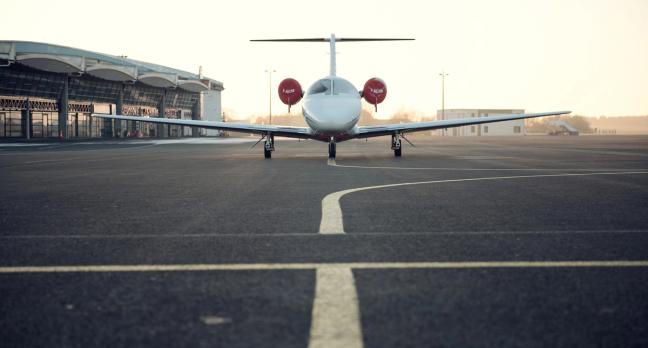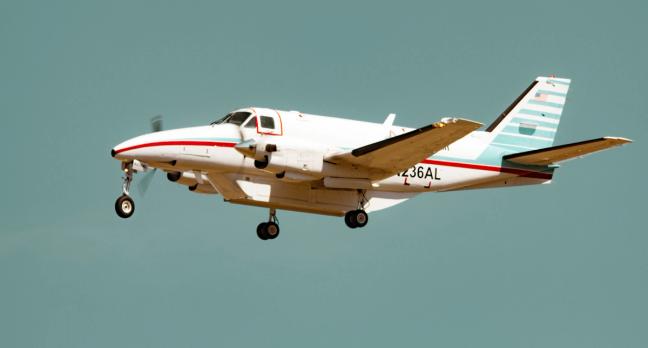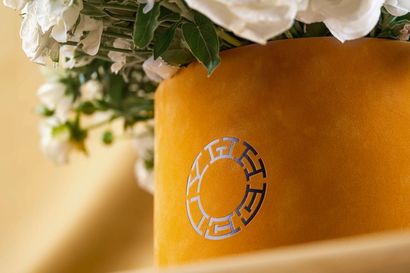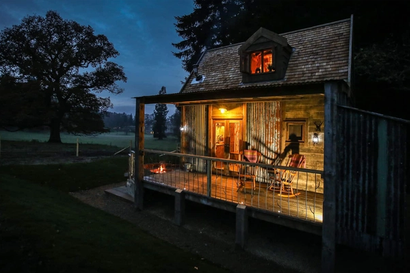Why every gentleman should learn how to fly
Looking to add another string to your bow? Then take to the skies
Dreams where you’re flying (the second most common night-time fantasy, after those dreams where you’re naked – but we’re not quite that sort of magazine) mean that you’re yearning for freedom, apparently: hoping and wishing to throw off the rivets and chains of everyday life and just be yourself, for bloody once.
Or perhaps they just mean you’d like to fly around a little; to hop in a tin machine and jaunt down to St Moritz or Cap d’Antibes on your own steam. And, while we can’t help with the first affliction (perhaps go to Thailand for a bit or get a new haircut), we can certainly point you in the right direction for the second. Here, with our feet firmly on the ground, is the Gentleman’s Journal guide to learning to fly. Use it as you wish, and put some bloody clothes on for God’s sake.

On the first and most important step, it pays to defer to the experts. Make sure that your instructor is fully accredited and registered with the Civil Aviation Authority. You can find a full list of the CAA recommended flying instructors here.

Most flying instructors seem to be of the “throw them in the deep end and hope they can swim” school of thought. And there is no deeper end than the great blue yonder of the skies. Don’t be perturbed if you’re gifted the yoke after only a few hours of lessons while your instructor utters the immortal words “your plane”. Most flying schools have a dual set of controls, like a learner driver’s car. Your instructor knows what he’s doing, and is ultimately in control all of the time.

Pilots are the world’s greatest multi-taskers (take that, women). The added plane of movement in air travel, combined with the vast array of pertinent variables and changing conditions (airspeed, climb rate, heading, orientation, fuel level, oil temperature, etc) mean that any pilot needs to have four sets of eyes and two pairs of hands, or at least act like it. Most learner pilots can very amply handle one or two of these variables – so don’t panic just yet.
Some are naturals with the stick (all those computer games as a child may finally pay off – thanks very much, mum), while others take a little while to get their heads around the pedals and gadgetry. But, to do all at once immediately is all but impossible for the novice flyer. Don’t be put off by these early frustrations, however – you’ll soon develop the necessary sixth, seventh and eighth senses.

With a couple of hours at the yoke, you’ll come to realise that the controls of the plane are almost hair-trigger sensitive: shifts of just a centimetre are accompanied, after a second or so delay, into fairly dramatic movements in heading or altitude. Most new pilots tend to over-steer and then over-correct, which usually ends up in a troublesome tug of war between man and plane. Remember: in the air, less is more.

There are various flying licenses for the amateur and hobbyist pilot, but the best place to start is probably the EASA Private Pilots License (EASA-PPL). The EASA-PPL is valid worldwide and allows you to fly any EU registered aeroplane (with a take-off load under 5700kgs), so long as it’s during daylight hours.
This license takes a minimum of 45 hours training, and covers all you need to know: climbing, descending, turning, “circuits” (small rectangles flown around an airfield), as well as navigation and indicator training. In the course of your training, you’ll also have to manage a 150 mile trip and two landings at aerodromes other than your “home” base – all absolutely solo.

Practice means nothing, however, without a little theory. To earn the right to call yourself a pilot you’ll have to pass 7 multiple choice examinations (Air Law, Meteorology, Navigation, Aircraft Technical, Flight Planning & Performance, Human Performance & Limitations Principles of Flight and Radio Telephony) with a 75% pass mark.,
Then comes a practical radio examination followed by a Licensing Skills Test (LST) with an examiner who will asses your flying – basically a final driving test, but in the air. Once you’ve passed this, you’re good to go. At around £10,000, the entire training loop is not cheap. But then again, you can’t put a price on following your dreams.

Become a Gentleman’s Journal Member?
Like the Gentleman’s Journal? Why not join the Clubhouse, a special kind of private club where members receive offers and experiences from hand-picked, premium brands. You will also receive invites to exclusive events, the quarterly print magazine delivered directly to your door and your own membership card.


